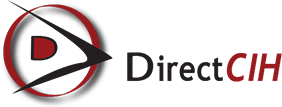(Clients include industry and attorneys)
Noise Sampling / Monitoring
OSHA has Permissible Exposure Limits (PELs) for noise (90 dBA for workers in an 8 hour work day). OSHA uses a 5 dBA exchange rate for the standard. This means that if the noise level is increased by 5 dBA, the amount of time a person can be exposed to this level of noise must be cut in half.
When noise exposure equals or exceeds an eight hour Time Weighted Average of 85 dBA, OSHA requires that a Hearing Conservation Program must be established. This program includes baseline and annual hearing testing (audiograms), the requirement that suitable hearing protection be provided by the employer, annual training, and recordkeeping.
DirectCIH uses dosimeters to determine if occupational exposure limits are being met. DirectCIH uses an octave band analyzer to determine the frequencies of noise in situations to aid in the evaluation of the sources and impacts of the noise.
When noise is an issue for residential settings, an environmental noise assessment can be conducted. A proper assessment includes interviews, source studies, instrumentation, municipal statutes and guidelines, and statistical analysis of data. The assessment can then be used to determine when controls on excessive noise must be implemented or fair housing values be provided to affected parties to compensate residents.
DirectCIH conducts workplace noise measurement for compliance; develops hearing conservation programs for employers; and trains employees in the elements of hearing conservation, personal protective equipment, and requirements under the OSHA Standard. DirectCIH also uses octave band analysis for data logging in assessing environmental noise as part of an overall assessment.
